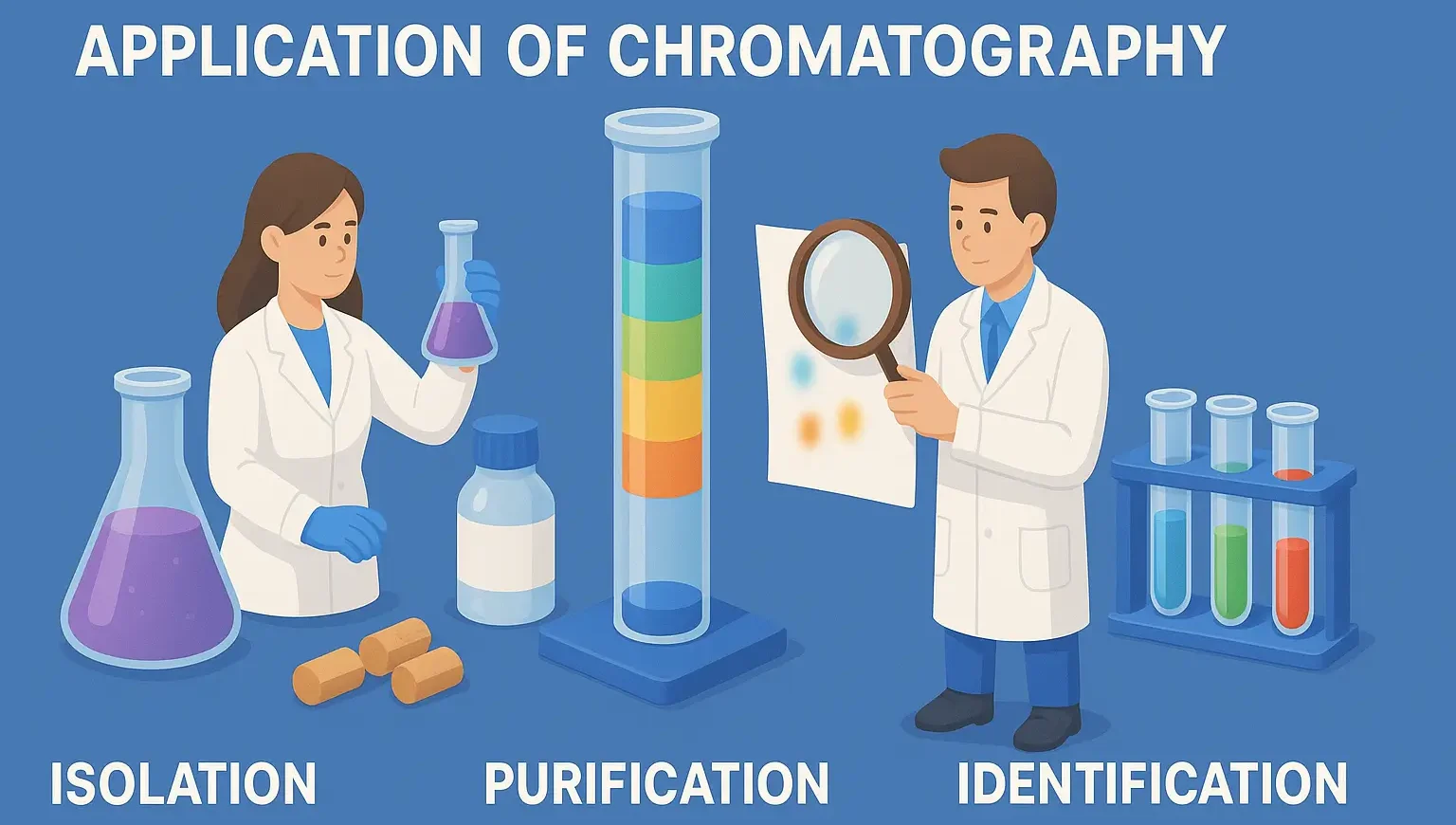- Explore the Application of Chromatography in the isolation, purification and identification for accurate compound detection and purity analysis.
- Application of Chromatography in the isolation, purification and identification enables separation of complex plant mixtures with precision.
- Chromatography is essential for separating, purifying, and identifying bioactive compounds from crude plant or microbial extracts.
- These techniques exploit differences in polarity, size, and other physicochemical properties.
-
Thin-Layer Chromatography (TLC)
-
Principle:
- Separates compounds based on migration rates on a coated plate (silica, alumina).
-
Application:
- Rapid, cost-effective screening of multiple components in crude extracts.
- Rf value comparison with known standards.
-
-
Column Chromatography
-
Principle:
- Uses a stationary phase (e.g., silica gel) and a mobile phase (solvent) for separation.
-
Application:
- Scalable fractionation of plant extracts.
- Pre-purification step before advanced techniques.
-
-
High-Performance Liquid Chromatography (HPLC)
-
Principle:
- High-pressure pumps drive solvents through a column with small particles for high-resolution separation.
-
Application:
- Quantitative analysis and quality control of phytochemicals.
- Coupled with UV, fluorescence, or MS for improved identification (HPLC-UV, HPLC-FLD, LC-MS).
- Standardization of herbal extracts in pharmaceuticals.
-
Advertisements
-
Gas Chromatography (GC)
-
Principle:
- Separates volatile compounds based on boiling points and stationary phase interactions.
-
Application:
- Analysis of essential oils and volatile compounds.
- Commonly paired with MS (GC-MS) for compound identification.
-
-
Supercritical Fluid Chromatography (SFC)
-
Principle:
- Uses supercritical fluids (e.g., CO₂) as the mobile phase.
-
Application:
- Suitable for non-polar to moderately polar compounds.
- Eco-friendly alternative to organic solvents.
-
-
Preparative Chromatography
-
Principle:
- Scaled-up column or HPLC for bulk purification.
-
Application:
- Produces milligram to gram quantities of pure compounds for pharmacological testing.
-
- These chromatographic methods complement spectroscopic techniques, ensuring comprehensive compound identification and purification.
Click Here to Watch the Best Pharma Videos
Advertisements

